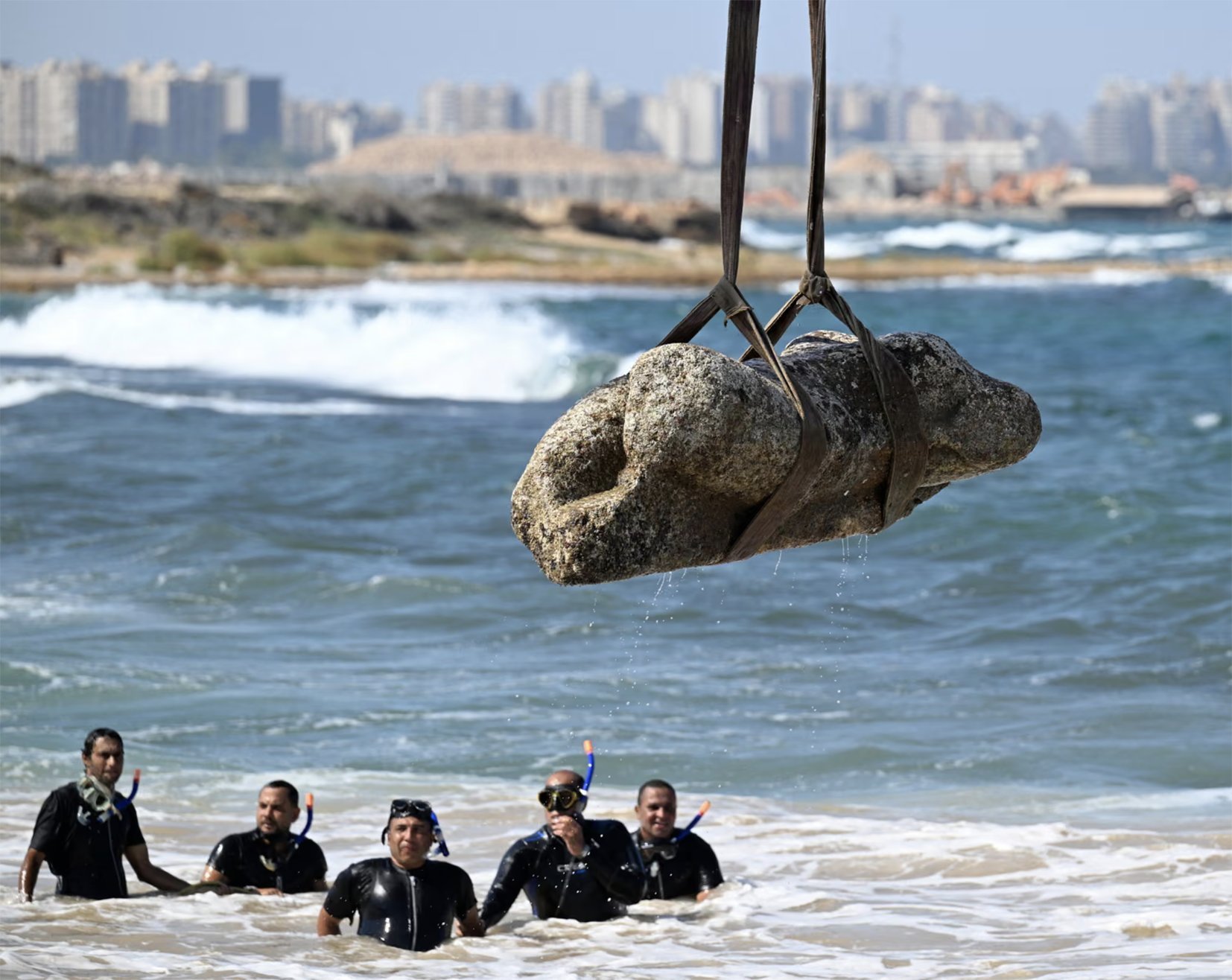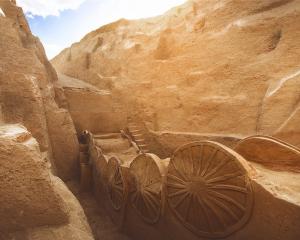
Minutes later, we were swimming down sunken streets and exploring the houses, where in one the oil storage jars were still neatly arranged in the kitchen.
So. it was with great interest that I caught up this week with news of two discoveries from the fertile archaeological record of Egypt.

Hats rarely survive but one of these was discovered by the great excavator Sir Flinders Petrie and donated to the Chadwick Museum in Britain in 1911. There it has rested, moth-eaten and forgotten. Now, however, it has been restored and put on display, only one of three known.
Some of those Roman legionaries might have taken a dip in Abu Qir Bay near the city of Alexandria. The waters of the bay cover the sunken wreckage of Napoleon’s fleet after the Battle of the Nile on August 1, 1798. It was during that encounter the French flagship Orient was blown sky high such that the bow was found hundreds of metres from the stern.
Now a new discovery has come to light — another sunken city that was once the trading port of Canopus. Divers have been down to map the city that flourished from about 300BC until the arrival of the sun-hatted Romans. They have traced the ancient temples, houses and industrial facilities. There are reservoirs and ponds where a supply of fresh fish was maintained. Most of all, they have brought in cranes to bring to the surface statues that mingled underwater with the remains of ships, still with their stone anchors in place.
There is a salutary lesson to be learned from the fate of Canopus. It sank due to earthquakes and a rising sea level. At the rate of global warming, Alexandria is in danger of being submerged — it is already sinking by 3mm annually. Archaeology not only informs us on the past, but warns about the future.












